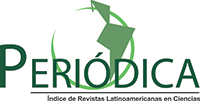What nursing knowledge is needed to develop nursing practice?
DOI:
https://doi.org/10.5216/ree.v13i2.14773Abstract
Years ago, a nurse I admired was kidding me about graduate school. What was a nursing diagnosis (ND), and why did we need them? Wasn’t it enough to know that the infant had respiratory distress syndrome? Why add in this other layer of nonsense? Why spend my time thinking about theory and other ridiculous things that had no context in clinical practice? I hear similar comments from nurses today.
What, then, is the knowledge of nursing practice? Nurses generally do not question the need for medicine to research disease and its treatment – yet many cite as irrelevant research done on human responses and treatment of those responses to achieve nurse-sensitive outcomes. When we neglect to teach, read or implement critical research on nursing knowledge and how it impacts patients – it becomes an afterthought, information that is “nice to know if you have time”. Is this what nursing is – a nice to have but not necessary field of practice? Why do nursing students and nurses in practice often feel they must implement physician orders and then, if they have time, “do some nursing”? I believe that this clinical reality occurs primarily because we do not, as a collective whole, really educate nurses, our peers or our patients about the discipline of nursing.
Nursing curricula heavily emphasize pathophysiology and pharmacology – is this nursing? These disciplines provide important content for nursing practice. But do they define nursing? I believe they do not – nurses need to understand these related fields, but we need to focus on human responses. What is pain? How is it manifested across lifespan, setting, etiology, gender, or culture? How do we differentiate acute pain, chronic pain and impaired comfort? How does a particular medical condition impact the human response of pain or comfort? What makes pain associated with a bone fracture different from pain experienced with diabetic neuro-pathy? Do we really understand the concepts – or do we merely rush to provide pharmacologic treatment of a symptom we are observing? Is that medication the best intervention – or is it simply the easiest? What do we do for the patient who cannot tolerate the medicine, or does not want it? How does the etiology of the pain, the patient’s coping mechanisms and history, impact his pain response? If we do not understand how acute pain and chronic pain differ, or how impaired comfort and chronic pain differ, how do we know what we are really treating? How can we best achieve a positive patient outcome? I believe we cannot.
Imagine a curriculum designed around core concepts of nursing knowledge. Rather than modules based on physician diagnosis (MD) on congestive heart failure or bone fractures, we could have modules on pain, risk for contamination, decreased cardiac output, or acute confusion. Rather than clustering content around medical diagnoses, we could use ND - concepts of importance to nursing practice – and cluster content around them, including related medical diagnoses, psychosocial, cultural and physiological responses, pharmacological treatments and desired outcomes.
This would require many nurses to reframe their concepts of ND. Some recent literature implies that ND were developed for documenting nursing in the electronic health record (EHR). The truth is that ND were (and are) developed to provide language that describes the knowledge and practice of nursing. Just as medical diagnoses are used within medicine – not as a documentation tool, but as a tool for describing what is being treated in a concise, internationally understood language to drive intervention and outcome - if correctly developed as concepts that can be defined, studied, taught and implemented in practice, ND can describe what nurses know, drive what we do and what outcomes we achieve.
I doubt that anyone would suggest that a physician should be allowed to create a medical diagnosis at a patient’s bedside and begin to use it clinically; yet some advocate for this practice in nursing. Simply construct a label and you have ND. But what does it mean? What do we know about this concept? How do I teach it, research it, measure it or share it with other disciplines and patients? How can we be so disinterested in understanding the core knowledge of our discipline? How can we allow what works best in a computer system to drive nursing practice, to mandate how we, as a discipline, develop the science beneath the labels?
Are ND just documentation tools? Unfortunately, that is what they become when we neglect to teach the concepts – really understand these phenomena of nursing practice and the content underlying them. Nursing diagnoses were never meant to be simple terms that could be created at random to describe a condition. Nursing diagnosis labels should describe a concept (including health promotion concepts, not just “problems”) that is clearly and uniformly defined and supported by nursing research and practice literature, identified by signs/symptoms that can be obtained during nursing assessment, review of patient/family history, diagnostic tests and completion of various screening tools. The concepts should be well researched, well developed, and internationally disseminated.
What would have to change to enable students to learn about nursing practice, how it supplements and interrelates with the practice of other health disciplines? We would have to teach nursing – the science of diagnosing and treating human responses to actual or potential health problems or life processes – and we would have to completely restructure, in most cases, how we practice nursing. Are you ready for such a challenge? I believe we must make these changes quickly, before we lose what it truly means to be a nurse.














